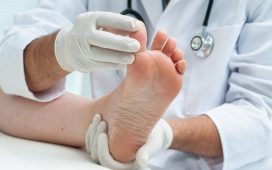Gynecomastia is an increase in the quantity of breast gland tissue in boys or men caused by an oestrogen and testosterone imbalance. Gynecomastia can affect one or both breasts, and it might be unequal.
Pseudogynecomastia is defined as an increase in male breast fat but not glandular tissue.
Gynecomastia can develop in newborns, pubescent boys, and older men as a result of normal changes in hormone levels, while additional causes exist.
In general, gynecomastia is not a significant problem, although it can be difficult to deal with. Men and boys with gynecomastia may experience breast pain and embarrassment.
Gynecomastia can resolve on its own. If the problem persists, medication or surgery at a plastic surgery center may be necessary.
Symptoms
The majority of adult men with gynecomastia have no symptoms. The following are some signs and symptoms of the condition:
- Pain, especially in adolescents
- Breast tissue enlargement
- Breast sensitivity
- Nipple sensitivity caused by pressing against clothing
When should you see an aesthetic surgery doctor?
Consult an aesthetic surgery doctor if you have any of the following symptoms:
- Pain or pain due to swelling
- Breast discharge from one or both breasts
Causes
Gynecomastia is caused by a reduction in the level of testosterone in comparison to estrogen. Conditions that limit the effects of testosterone, lower testosterone, or elevate estrogen levels can all cause a decline.
Several factors, including the following, can disrupt hormone homeostasis.
Natural hormonal shifts
Both men and women are controlled by the hormones testosterone and oestrogen. Testosterone regulates male characteristics such as muscular mass and body hair. Estrogen regulates female characteristics such as breast growth.
Most people think of oestrogen as a female hormone, but men make it as well – albeit in little amounts. Gynecomastia can be caused by male oestrogen levels that are too high or out of equilibrium with testosterone levels.
Infant gynecomastia
Because of the impact of their mother’s oestrogen, more than half of male children are born with larger breasts. Swollen breast tissue usually goes away two to three weeks following birth.
Gynecomastia in adolescence
Gynecomastia is a rather common condition caused by hormonal changes during adolescence. Most cases of swollen breast tissue resolve without treatment within six to two years.
Adult gynecomastia
According to researchers, the incidence among men aged 50 to 80 ranges between 24% and 65%. However, the majority of males with the illness have no symptoms.
Medications
A variety of drugs can result in gynecomastia. Such as Anti-androgens are drugs that are used to treat enlarged prostates, prostate cancer, and other diseases. Flutamide, finasteride (Proscar, Propecia), and spironolactone are a few examples (Aldactone, Carospir).
To address hormone deficits, delayed puberty, or muscle loss caused by another disease, anabolic steroids and androgens are used.
Some HIV drugs, particularly Efavirenz, have estrogen-like characteristics that can cause gynecomastia (Sustiva).
- Amphetamine-containing ADHD medicines, such as Adderall.
- Diazepam and other anti-anxiety drugs (Valium).
- Antidepressants that are tricyclic.
- Antibiotics.
- Cimetidine, an over-the-counter ulcer treatment, is one example (Tagamet HB).
- Chemotherapy is used to treat cancer.
- Digoxin (Lanoxin) and calcium channel blockers are also heart medicines.
- Metoclopramide and other stomach-emptying drugs (Reglan).
- Alcohol, illicit substances, and recreational drugs
The following substances can cause gynecomastia:
- Alcohol
- Anabolic steroids are used to bulk up and improve sports performance.
- Amphetamines
- Marijuana
- Methadone Heroin (Methadose)
- Health problems
Several medical problems can cause gynecomastia by disrupting the hormonal balance. These are some examples:
Hypogonadism
Gynecomastia can be caused by conditions that reduce testosterone production, such as Klinefelter syndrome or pituitary insufficiency.
Aging
Hormone changes associated with ageing might result in gynecomastia, particularly in overweight males.
Tumours
Some tumours, such as those of the testicles, adrenal glands, or pituitary gland, can generate hormones that disrupt the male-female hormone balance.
Hyperthyroidism
The thyroid gland produces an excessive amount of the hormone thyroxine in this disease.
Failure of the kidneys
Gynecomastia affects almost half of all dialysis patients due to hormonal abnormalities.
Cirrhosis and liver failure
Gynecomastia is associated with changes in hormone levels caused by liver disorders and cirrhosis treatments.
Hunger and malnutrition
When your body lacks appropriate nutrients, testosterone levels fall while oestrogen levels remain constant, resulting in a hormonal imbalance. When normal nutrition is resumed, gynecomastia could go away.
Herbal remedies
Plant oils used in shampoos, soaps, and lotions, such as tea tree or lavender, have been linked to gynecomastia. This is most likely due to their low estrogenic activity.
Risk elements
Gynecomastia risk factors include:
- Adolescence
- advancing age
- Certain medical disorders, including liver and renal illness, thyroid disease, hormonally active tumours, and Klinefelter syndrome, may need the use of anabolic steroids to improve sports performance.
Complications
Gynecomastia has little physical implications, but it might lead to psychological or emotional issues due to its appearance.
Prevention
There are a few things you can do to lower your risk of gynecomastia:
Don’t experiment with drugs. Anabolic steroids, amphetamines, heroin, and marijuana are a few examples.
Stay away from alcohol. Don’t consume alcohol. Drink in moderation if you do drink.







